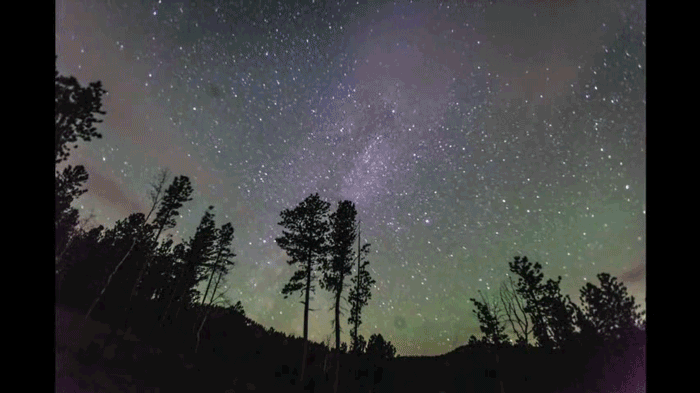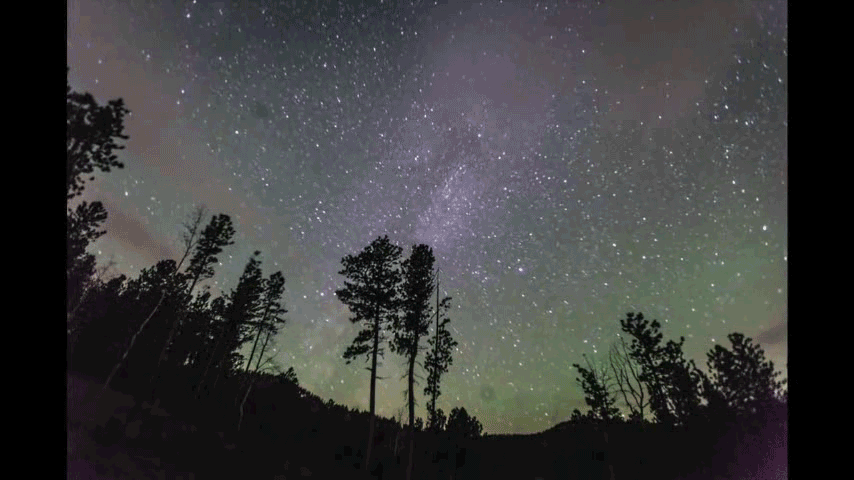It looks like you're using an Ad Blocker.
Please white-list or disable AboveTopSecret.com in your ad-blocking tool.
Thank you.
Some features of ATS will be disabled while you continue to use an ad-blocker.
share:
a reply to: mindseye1609
as the timelapse was set up to capture the starfield the shutter was probably quite wide and it looked
like a dark location so the bolides post burnup/explosion cloud was probably reflecting either sunlight (remember it was several miles up) or perhaps earthshine
at those sorts of altitudes there is quite a lot of light just not much to reflect it from.
as the timelapse was set up to capture the starfield the shutter was probably quite wide and it looked
like a dark location so the bolides post burnup/explosion cloud was probably reflecting either sunlight (remember it was several miles up) or perhaps earthshine
at those sorts of altitudes there is quite a lot of light just not much to reflect it from.
originally posted by: funbox
who would have thought the atmosphere was that hard that it's dispersal was as such, I can't imagine a stony/iron meteorite producing an effect like that , what was it made out of rice crispy's?
very odd looking
funbox
think about water you can stick you hand into it effortlessly but have you ever belly flopped into a pool!
ouch.
now scale it up to trying to run through air at 50,000 MPH it is like trying to stick you hand through a stone wall.
friction is a force to be reckoned with!
originally posted by: funbox
who would have thought the atmosphere was that hard that it's dispersal was as such, I can't imagine a stony/iron meteorite producing an effect like that , what was it made out of rice crispy's?
very odd looking
funbox
funbox does it once again, the gif with the most gif per square gif.
edit on 4-11-2014 by Aleister because: (no reason given)
a reply to: ShayneJUK
indeed , but I cannot see even one small burning particulate that made it through, everything got flung out radially , not one heavier falling piece.. literally rice crispy's,
or something totally homogenous
an explosion at the point of explosion
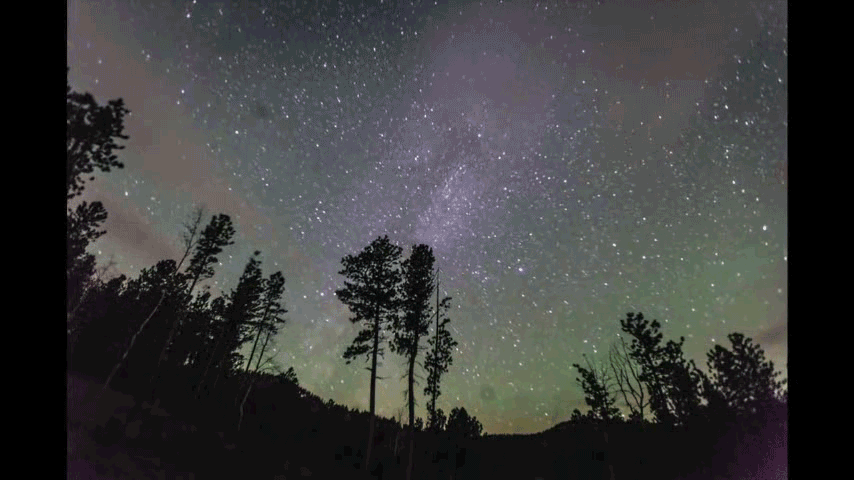
full screen:files.abovetopsecret.com...
funbox
indeed , but I cannot see even one small burning particulate that made it through, everything got flung out radially , not one heavier falling piece.. literally rice crispy's,
or something totally homogenous
an explosion at the point of explosion

full screen:files.abovetopsecret.com...
funbox
edit on 4-11-2014 by funbox because: thoroughly soaked wolf gifs
Cool find jaffo.
Found this which says it's the same "Bolide" from a different location.
From this
Vimeo
Marc
originally posted by: Spader
I believe that is what they call a Bolide.
Found this which says it's the same "Bolide" from a different location.
From this
Vimeo
A Brush With a Bolide Last week while I was scrolling through my Facebook newsfeed I read a PetaPixel post about a rare bolide fireball that was captured by photographer Ben Lewis. At the time I was on a camping/time-lapse trip in Southern Utah and my internet connection portals were far-and-few-between so I kept the browser window open for a later read. When I got home I read the article and noticed that the date it went down was very close to when I was near Canyonlands National Park shooting astral time-lapse sequences. I lined up the dates and sure enough my camera was pointed at the night sky for the entire night and I caught the phenomenon in the top of the frame. The bolide and the smoke was visible for over 10 frames which is a long time given the interval I was shooting on, and the lens I was using. Tech Data: Camera: Canon 6D ISO: 3200 Shutter-speed: 30 seconds Lens: 14mm at f-2.8. interval: 38 seconds Motion control: eMotimo Audio FX from freesound.org users: FxProSound, keinzweiter, Alxy.
Marc
edit on 4-11-2014 by marc72 because: To add
edit on 4-11-2014 by marc72 because: Grammer, Doh
Don't small and bigger meteors hit us quite often? If the theory is that the meteor exploded on contact with our atmosphere, what would be the
explination on how other meteors are able to pass our atmosphere intact.
a reply to: funbox
timelapse though isn't it so what is the frame rate?
there is probably a fair chunk of action lost between the frames.
and without data on size of the object angle of entry composition velocity etc
its all just guesswork but i would imagine it was a lot smaller than it looked and most
of the glow was super heated atmosphere and it just burnt out to a puff of gas which was then carried
away by an upper layer jet-stream
if i had to guess i reckon it was a stony meteor about the size of a garden pea when it hit the atmosphere
timelapse though isn't it so what is the frame rate?
there is probably a fair chunk of action lost between the frames.
and without data on size of the object angle of entry composition velocity etc
its all just guesswork but i would imagine it was a lot smaller than it looked and most
of the glow was super heated atmosphere and it just burnt out to a puff of gas which was then carried
away by an upper layer jet-stream
if i had to guess i reckon it was a stony meteor about the size of a garden pea when it hit the atmosphere
originally posted by: ShayneJUK
a reply to: funbox
timelapse though isn't it so what is the frame rate?
there is probably a fair chunk of action lost between the frames.
and without data on size of the object angle of entry composition velocity etc
its all just guesswork but i would imagine it was a lot smaller than it looked and most
of the glow was super heated atmosphere and it just burnt out to a puff of gas which was then carried
away by an upper layer jet-stream
if i had to guess i reckon it was a stony meteor about the size of a garden pea when it hit the atmosphere
uncertain about the framerates, but im sure the info will turn up sooner or later.
given that we see the initial comet in more than two frames before it explodes , ide say that it was in the region of 3-5 frames per second again its difficult to tell, it could even be a slow mover , if the cameras taking *??* shots per minuet..
super heated gas that expands from it point of explosion , shouldn't it expand outwards from it point of explosion ?
it appears from left to right in my eyes , seems like the atmosphere doesn't know how to blow a decent smoke ring
funbox
originally posted by: ShayneJUK
a reply to: funbox
timelapse though isn't it so what is the frame rate?
there is probably a fair chunk of action lost between the frames.
and without data on size of the object angle of entry composition velocity etc
its all just guesswork but i would imagine it was a lot smaller than it looked and most
of the glow was super heated atmosphere and it just burnt out to a puff of gas which was then carried
away by an upper layer jet-stream
if i had to guess i reckon it was a stony meteor about the size of a garden pea when it hit the atmosphere
You Got it Almost right!
When a bolide, or in this case a fairly dense probably METALLIC object,
hits the atmosphere at an OBLIQUE angle (not face on!) a shock front
forms that contains superheated plasma which races outwards from
the centre-point of the initial atmospheric impact.
I think I see multiple colours in the shock-front,
which means the bolide HAD to have contained metallic
elements which vapourized and mixed with the upper
atmosphere's nitro-oxides and hydrogen gasses to give
us that beautiful glow. The plasma that had been
created by the impact would have been so hot and
electrically charged that it glowed like a neon light
making it easily visible from a long distance away
and on the ground. If someone had a much-more
clear photo of the plasma glow, you would be able to
match the spectra-lines (i.e. the explosion's colour)
to specific elements which burn and give off specific
photo-emissions (i.e. specific wavelengths/frequencies
of radiation in the optical bands of the electromagnetic spectrum)
which tell scientists what the bolide would LIKELY have been made of.
(i.e. it's composition of elements such as iron, magnesium, lithium, etc.)
And since the trajectory was at an oblique angle, the shock-front
would have started at the close-angled side first (i.e. the left)
and then moved around to the more open angle (i.e. the right)
which is why the shock front looks a bit like an animated effect.
AWESOME VIDEO in my opinion!
edit on 2014/11/4 by StargateSG7 because: spelling
originally posted by: mindseye1609
a reply to: funbox
The more vertical one almost looks like it was going upward?!
exactly how I'm seeing it, and the explosion is at the junction of the 2 trajectories. If thats the case then I would interpret that as one fast moving object (incoming) being intercepted by another object (moving upwards from our perspective) and destroyed.
A beautiful capture of the end of a meteors life. It leaves a pattern similar to the first ever meteor that was discovered to be a confirmed and
detected about 20 hours beforehand. (big oh crap moment!)
The meteor was 2008 TC3 linkand hit in a remote part of Sudan and these are the resulting atmospheric 'clouds', you can see it moved about and shaped by high strength winds in the upper atmosphere.
It's pretty much like a bullet when it hits water, you think it would go right through, but within a meter or two it flounders to the bottom.
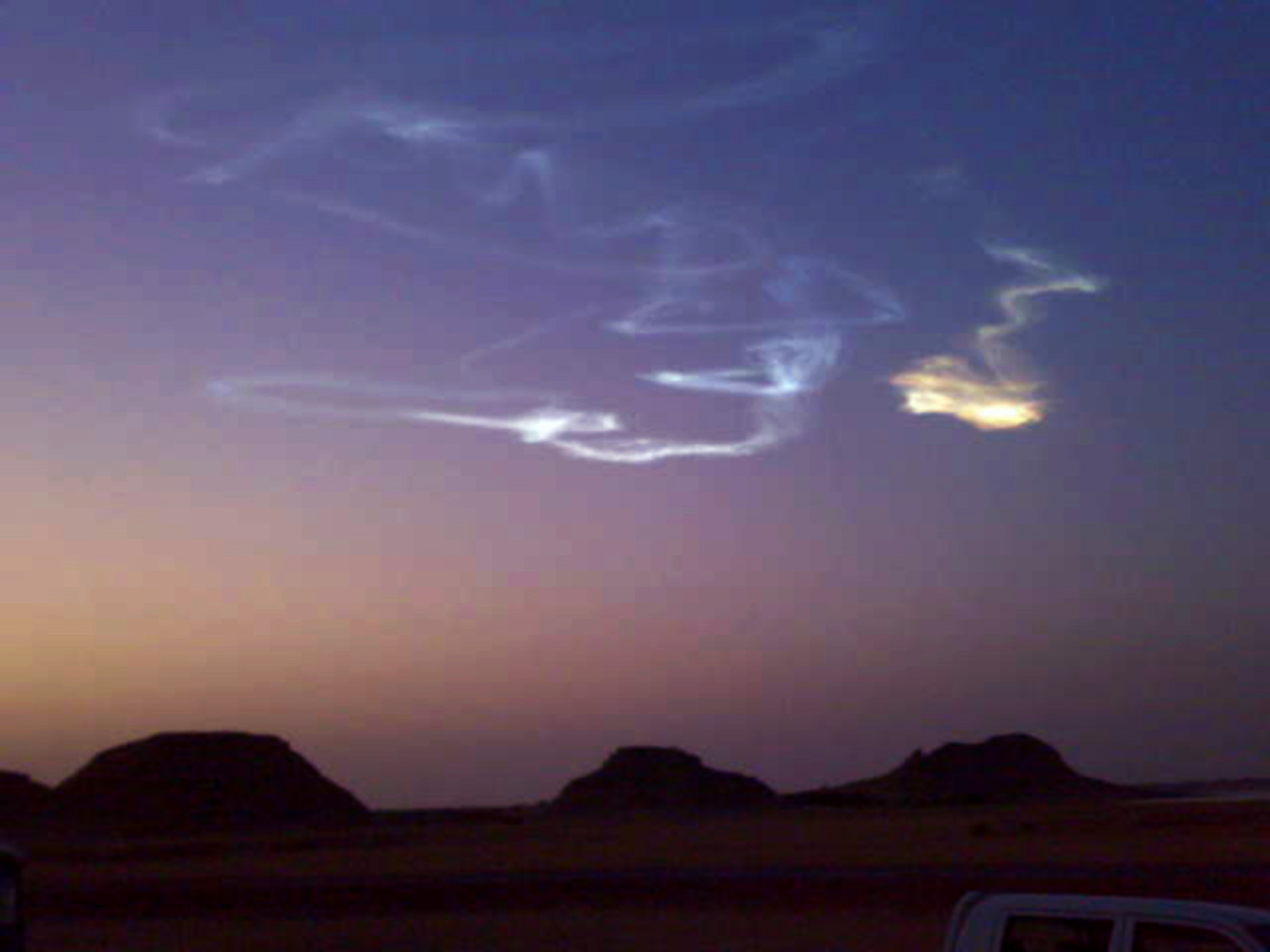
A similar one hit in Colorado a year later.
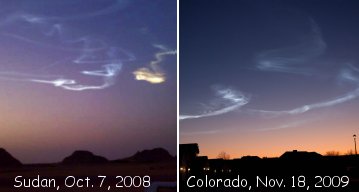
But I will say, this time lapse is the most beautiful one I've seen before.
The meteor was 2008 TC3 linkand hit in a remote part of Sudan and these are the resulting atmospheric 'clouds', you can see it moved about and shaped by high strength winds in the upper atmosphere.
It's pretty much like a bullet when it hits water, you think it would go right through, but within a meter or two it flounders to the bottom.

A similar one hit in Colorado a year later.

But I will say, this time lapse is the most beautiful one I've seen before.
Kinda looks like the that vortex picture on UFO Hunters
but more from the ground.
They had a time-lapse still
userpages.monmouth.com...
a reply to: jaffo
but more from the ground.
They had a time-lapse still
userpages.monmouth.com...
a reply to: jaffo
Without a technical description this lends credence to the electrical universe theory. An object of opposite charge came in contact with our
magnetosphere and was destroyed far away by just the electric charge differential of the two bodies. A lot of the eu theory says that things
originating from out of the solar system have a different charge and when two opposite charge differentials come together you get a big release of
energy.
new topics
-
Who guards the guards
US Political Madness: 2 hours ago -
Has Tesla manipulated data logs to cover up auto pilot crash?
Automotive Discussion: 3 hours ago -
whistleblower Captain Bill Uhouse on the Kingman UFO recovery
Aliens and UFOs: 8 hours ago -
1980s Arcade
General Chit Chat: 11 hours ago -
Deadpool and Wolverine
Movies: 11 hours ago
top topics
-
Lawsuit Seeks to ‘Ban the Jab’ in Florida
Diseases and Pandemics: 16 hours ago, 20 flags -
whistleblower Captain Bill Uhouse on the Kingman UFO recovery
Aliens and UFOs: 8 hours ago, 9 flags -
CIA botched its handling of sexual assault allegations, House intel report says
Breaking Alternative News: 14 hours ago, 8 flags -
Deadpool and Wolverine
Movies: 11 hours ago, 4 flags -
1980s Arcade
General Chit Chat: 11 hours ago, 4 flags -
Teenager makes chess history becoming the youngest challenger for the world championship crown
Other Current Events: 12 hours ago, 3 flags -
Who guards the guards
US Political Madness: 2 hours ago, 1 flags -
Has Tesla manipulated data logs to cover up auto pilot crash?
Automotive Discussion: 3 hours ago, 0 flags
active topics
-
"We're All Hamas" Heard at Columbia University Protests
Social Issues and Civil Unrest • 207 • : Vermilion -
whistleblower Captain Bill Uhouse on the Kingman UFO recovery
Aliens and UFOs • 8 • : CarlLaFong -
Mood Music Part VI
Music • 3085 • : TheWoker -
The Democrats Take Control the House - Look what happened while you were sleeping
US Political Madness • 106 • : Annee -
They Killed Dr. Who for Good
Rant • 65 • : grey580 -
House Overwhelmingly Passes Funding for Ukraine, Israel and Taiwan
US Political Madness • 60 • : Justoneman -
Candidate TRUMP Now Has Crazy Judge JUAN MERCHAN After Him - The Stormy Daniels Hush-Money Case.
Political Conspiracies • 628 • : FlyersFan -
I Guess Cloud Seeding Works
Fragile Earth • 38 • : seekshelter -
Another person lights themselves on fire and dies on College campus, happened in Red Deer, Canada
Mainstream News • 28 • : seekshelter -
23,000 Dead People Registered Within a Two Week Period In One State
US Political Madness • 41 • : Xtrozero

